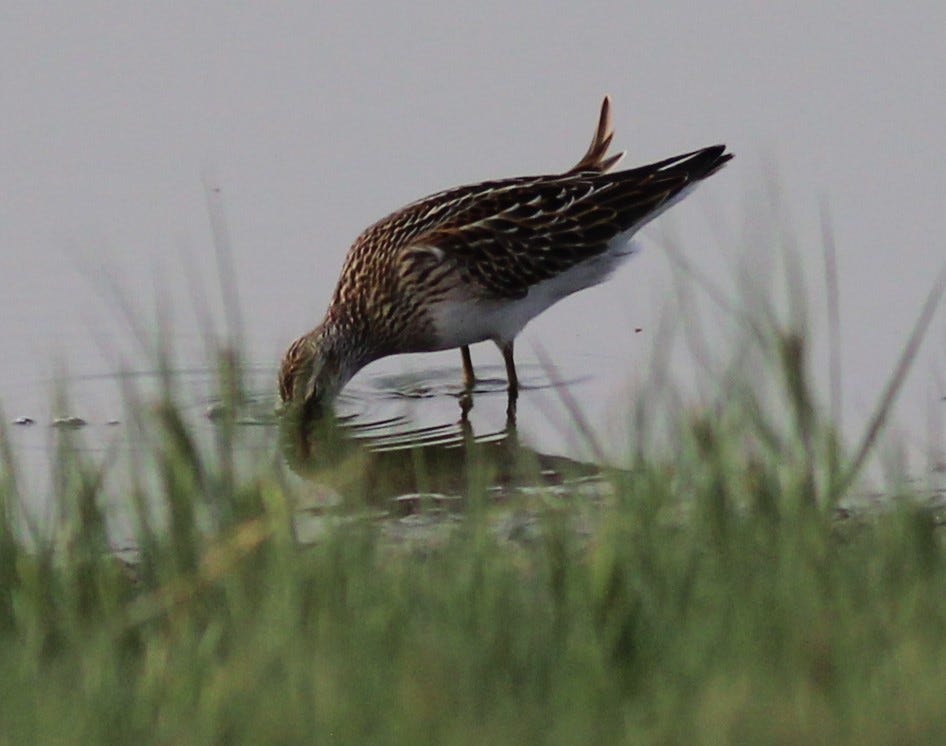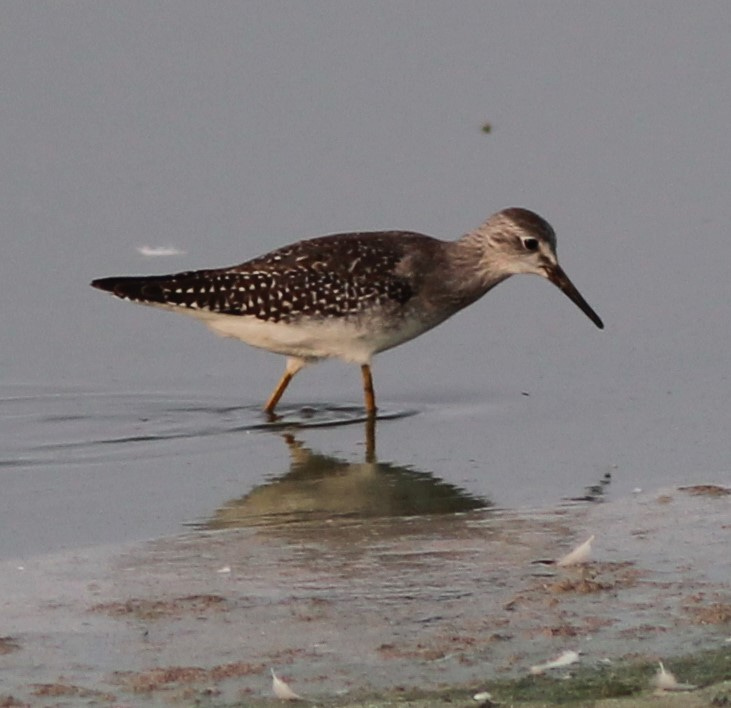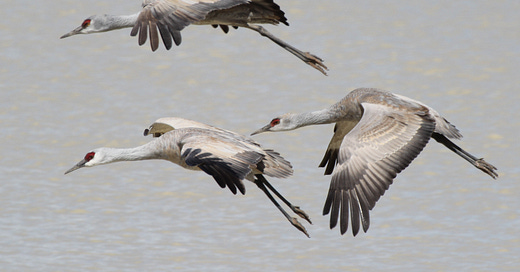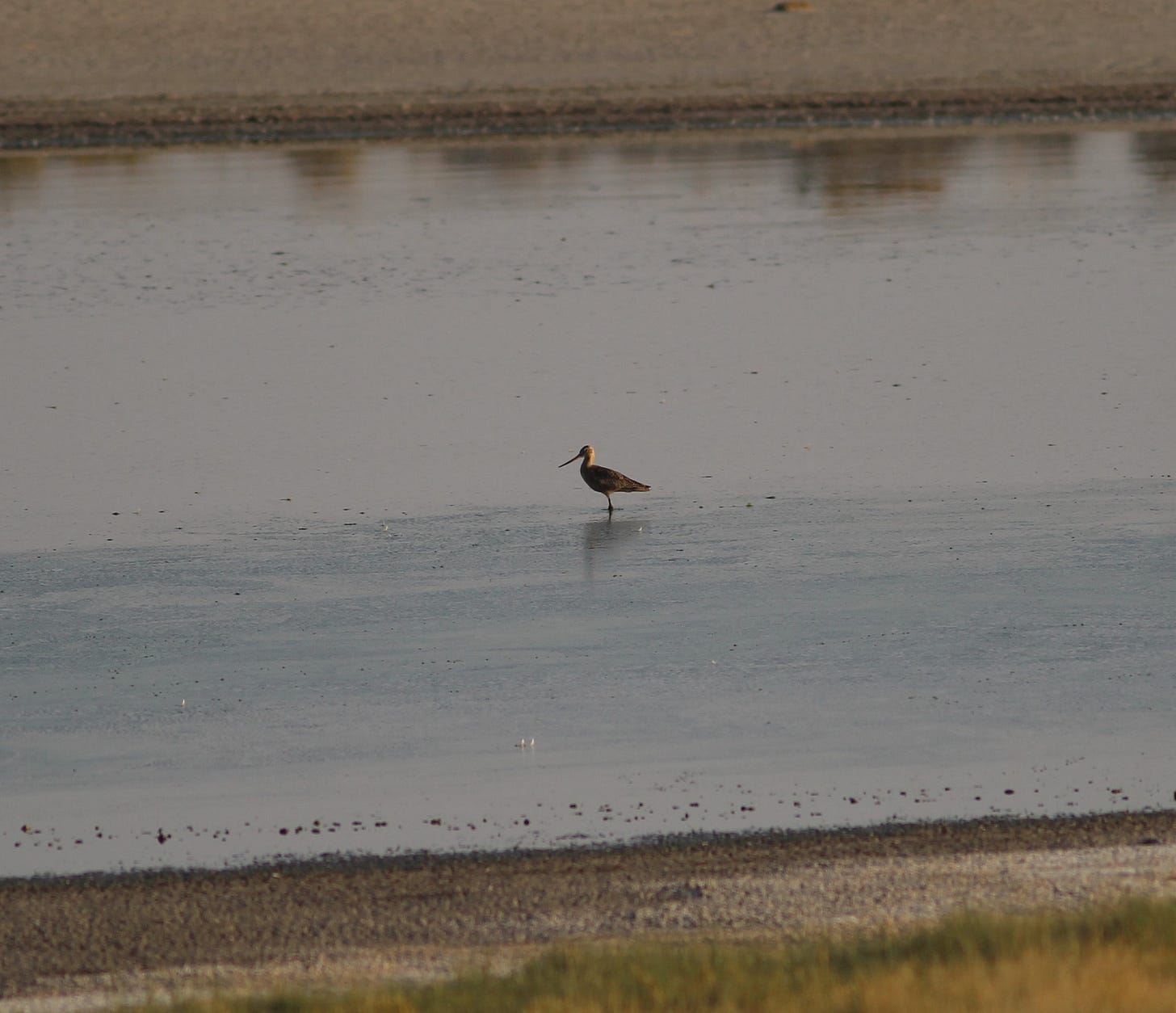Day 206 of the Quarantine (October 6, 2020)
Once more to the lake. 160 miles round-trip, the weight of the carbon streaming from my tailpipe pressing down on me with the heat. My contribution to the 40 billion metric tons of CO2 humans add to our atmosphere each year. CO2 and heat. Oppressive heat—it’s October! Willcox Twin Lakes has shrunken in this monsoon-disappointing drought to a single shallow mudhole choked with waterfowl and shorebirds with no place to go. Whitewater Draw, which I stopped at on the way here, is a parched lakebed of mostly grass and tumbleweeds and several thousand sandhill cranes. The cranes spooked as I made my circuit, and the sky filled with their Pleistocene wings and shrill, rolling, agitated voices. It was embarrassing. I looked around to see if anyone had noticed me, but I was the only human in the middle of a blue expanse of gray swirling birds.
I drove the 80 miles north across the Sulphur Springs Valley (an appropriate name), through dairies and corn and pinto beans between the Sulphur Hills and Three Sisters Buttes to the town named for an U.S. Army commander, General Orlando Bolivar Willcox. Some parents really know how to name their children.
I came for the ruff.
Ruffs are a kind of sandpiper with showy neck feathers sported by males during the breeding season. Like the birds are trying to bring back a 16th-century Renaissance clothing fashion. The shorebird, which winters in Eurasia and Africa and is a rare visitor to North America, was first documented in Arizona in 1974-75 and has appeared here only a half dozen times or so. I’ve never seen one.
The lake stunk of waterfowl excrement. The kind of stink that clings to clothes and skin and hair—lately I’ve become a model of clinging stink. I can see it in the looks of people I meet. The perplexing stare. The wrinkled faceplate and sour grin.
On my first drive around the lake, I spotted one of my target birds, a single marbled godwit probing the olive muck for plant tubers with its long, upturned bill and a look that said delicious. Most shorebirds eat aquatic invertebrates year-round, but during migration marbled godwits go vegan, somehow packing in enough calories and raising their red blood cell count to sustain them on their high altitude (9000-10,000 feet) flight from the northern Great Plains to Panama and South America.
I last saw one at Drakes Estero near Point Reyes, California in 2005, and now I could add it to my county list. I did the same with two different phalaropes, a red-necked and a red, both of which swam among the hundreds of gack-gacking northern shovelers and wheezing American wigeons at lake center.
According to eBird, the ruff was last reported this morning at 10:44 am. Five hours later, I carefully glassed for tall shorebirds, checking off dowitchers and yellowlegs and eliminating them and others by their long bills. A single pectoral sandpiper—named for the male’s chest sacs it inflates during courtship flights—drew most of my attention. Showy breasts but no showy necks. I couldn’t locate the ruff. Neither could the three other birders circling the lake repeatedly in their vehicles and checking in with me on each lap.
I searched until dark and then headed for home. Something told me there wouldn’t be any more sightings of the rare bird.
Zero life birds. .05 metric tons CO2.



Thanks for subscribing! More is on the way!





Some people really know how to name their children.... Lol I love a good name!